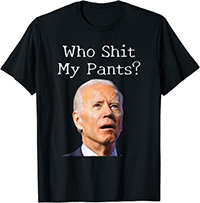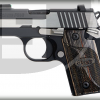Why the Gun Debate Will Never Change
Article Posted: March 27, 2013

It seems that after every major violent event perpetrated by an individual with a firearm, the media and a portion of the citizens of this great nation call for a better system of laws to control "guns" or more specifically, gun violence. It is a gut reaction, an emotional one, where we see the results of senseless violence and after analyzing it, determine there are social controls available to prevent any foreseeable future catastrophe. As noble and admirable a goal that may be, it is inherently flawed and utterly impossible in any society that has ever existed throughout recorded human history. To understand the conflict between regulating violence and the tools which are used to inflict it is a complex and hotly debated topic, where our emotions often are used as a guiding light as opposed to logic, and it often becomes difficult to disseminate the two in legislation. Perhaps a closer look at the history, facts, and information surrounding the "gun debate" is in order on a societal scale in order to reasonably address what can effectively be accomplished to mitigate mass violence in the American construct.
In order to justly control and legislate an article of possession or use, the basic nature of correlations must be brought out to light without prejudice. For every object of contention in society, there are numerous benefits and detractors that may not be prominently apparent, and the "order of effects" should take far more consideration than a precursory glance. At one time in the United States, the determination was made that alcohol was to be expressly prohibited for sale and production, much the same way that has been suggested for firearms. This led to a previously non-existent unregulated market as a first order effect, due to a number of the citizenry unwilling to abstain from the use and production of alcohol. There was a general perception among these people that they could well regulate the use of alcohol without government intervention, and that it had a legitimate application within their lives. Unfortunately the order of effects did not end there, and the overwhelming demand for (and capital available for) alcohol led to illegitimate corporations and businesses, branded as "mafia" or "organized crime syndicates." These organizations, sprung from the pocketbooks of otherwise upstanding citizens, were without regulation or moral constraints and had few qualms regarding the means to their money. Prior to the prohibition of alcohol, few if any distilleries or breweries attempted to assassinate local or federal law enforcement personnel and political officials. Afterwards, gun fights literally raged between the two, leading in part to the first piece of federal firearms regulation. This is a third order of effect of prohibition, one that was not commonly projected by the legislators and spiritual leaders at the time.
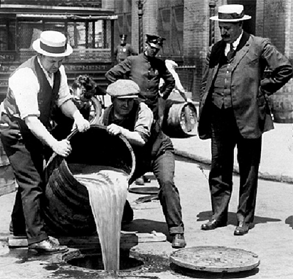
Primary goals in prohibition were to curb domestic violence, and promote a "morally straight" society, as commonly held beliefs at the time concluded that public houses, taverns and bars promoted amoral behavior and incited good people to engage in corrupt acts. To a degree, this was an understandable viewpoint as prostitution occurred with some regularity in locations that served alcohol, and the well documented correlation between alcoholism and domestic violence. However, the alternatives to prohibition proved almost universally more successful in shaping a productive and just society. By 1933, the situation was resolved in the dissolution of the 18th Amendment by the 21st Amendment. The resulting violence, common disregard for the law, and corrupt political climate that followed in the wake of prohibition were far worse consequences than tolerating alcohol, and the associated inherent issues were far easier to regulate at the state level than they could be effectively controlled by the federal government with an outright ban. Similarly, this would be the case with massive firearms regulation stemming from the prohibition legislation, where the law makers proved too short sighted and failed to thoroughly analyze the order of effects when they implemented new controls on an object in common circulation. As a recent example, gun sales in the United States have been a bright spot in a dim economy, with a 47% increase in total sales from December 2011 to December 2012, all by just the threat of legislation.
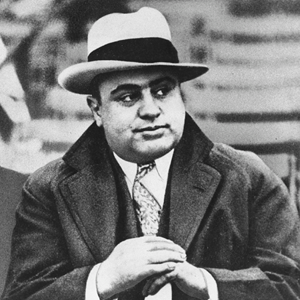
The National Firearms Act (FCA) of 1934 was the first wide-sweeping attempt to regulate the type of firearms available to the general public, and the first gun law that attempted to specifically define classes of weapons based on features and established authority to tax guns that were at the time considered "gangster weapons." It was enacted as a result of the St Valentine's Massacre, where two automatic .45 caliber Thompson machine guns were used to kill seven rival gang members in a Chicago warehouse. The classes of weapons defined were: Machine guns, Short Barreled Rifles, Short Barreled Shotguns, and "Any Other Weapon." The "Any other weapon" definition was originally intended to encompass pistols but later was truncated after political backing faltered with their inclusion due to the commonality and established use of hand guns in society. Machine guns were defined as "any weapon which shoots, is designed to shoot, or can be readily restored to shoot, automatically more than one shot, without manual reloading, by a single function of the trigger." Short barreled rifles were those with barrel lengths of less than 16 inches and short barreled shotguns were those with a barrel length of less than 18 inches. Any other weapon included those weapons that could be concealed on the person, smooth bore pistols (those without rifling groves cut into the barrel) designed to shoot shotgun shells, and combination rifle/shotguns with barrel lengths from 12 to 18 inches as well as silencers. The purpose in regulating such firearms was based primarily on the politics and perceived implementation of them, which caused some of the restrictions to quickly become obsolete. Individually carried and implemented machine guns were a relatively new invention at the time, with the first automatic shoulder fired weapon being made less than twenty years prior to the enactment of this legislation. These weapons had magazine capacities of anywhere from 20 to 50 rounds, and some even operated off of belted or linked ammunition, meaning they could be fired until the weapon overheated without reloading. Since the enactment of the Firearms Control Act of 1934, automatic weapons have been unavailable to the public without paying a fee and undergoing a multilayered back ground investigation, all at the cost of the applicant.
After the passage of the FCA, nearly all pistol designs with smooth bores became obsolete due to the intensive taxation and paperwork requirement, and as it made having "sawed off" shotguns subject to the same regulation, these similarly disappeared. These were not popular weapons prior to the ban due to limited practicality, and innovations in weapons design made them a second rate choice regardless of legality. Thompson sub-machine guns were still available to the public without the ability to fire on automatic as they had been previously. These were titled "semi-automatics" as they would cycle the weapon after being fired and prepare the weapon to fire again, but required that the user pull the trigger for each shot fired. The law also prohibited the conversion of semi-automatics to fully automatic, and forbid the sale of weapons that could easily be converted back. This forced gun designers and manufacturers to retool some semi-automatic designs in order to maintain compliance. Magazine capacity was not addressed in this law, as it was not common at the time to have detachable magazines, however it was a feature of the Thompsons used in the St. Valentine's Day massacre. Overall, the law did not impact a majority of the citizens as few owned weapons like the Thompson due to their high cost and limited use, and those that owned these weapons could register them and pay the tax if they possessed the means.
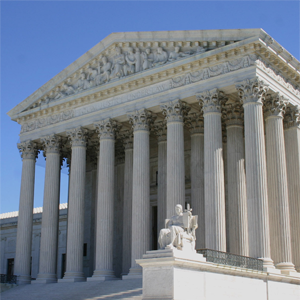
The Gun Control Act is designed to regulate who is allowed to buy, sell, transfer, import and possess weapons and ammunition, and was codified as Title I of the federal firearms laws, where the FCA of 1934 is Title II. This piece of legislation disallowed many citizens and immigrants the right to own or possess guns due to several factors, including: felony status, military discharge type, mental disability, drug addiction, and domestic violence. The controls established within the law were to be enforced by the Bureau of Alcohol, Tobacco, and Firearms (ATF), which would license and tax as appropriate those who were now required to have a Federal Firearms License. The license, depending on type, would allow a person to buy different types of controlled arms such as those in Title II, sell guns to private citizens and import them nationally or internationally in some cases. The application process for the FFL includes intensive background investigations, finger printing, and many record keeping requirements by the licensee, who is held liable with stiff fines and imprisonment for any sale that is against regulations although it does not grant them any investigative ability. Specifically, the GCA was implemented to prevent possession of guns by those who would use them maliciously, based on making it unlawful "to sell or otherwise dispose of any firearm or ammunition to any person knowing or having reasonable cause to believe that such person…" had one of the many listed conditions. Unfortunately, it is difficult to determine if someone had any one of the number of restricted conditions short of having a police report, which would not necessarily report all of the information regardless. The GCA does not put liability onto the seller of the gun to thoroughly investigate the eligibility of the buyer beyond knowing already or having a suspicion of non-compliance of the buyer, although the ATF may hold them accountable. According to the GCA however, it is neither the job nor the responsibility of a retailer or private individual to investigate the legal, health, and personal background of a potential customer, and few customers would be comfortable with such an investigation. So then, who has this responsibility if it is not established as the government's or the retailers? The GCA dropped that responsibility onto the purchaser of the weapon via federal form 4473.
The sale of any weapon by a federally licensed individual would require the submission of form 4473, which asks the buyer in yes or no questions if they "Are a fugitive from Justice?" or if they "Have ever been adjudicated mentally defective?" If the answers on the form are libel, the purchaser may be convicted of a federal felony and may be fined up to $250,000.00 or confined for up to 10 years. That is, if anyone ever finds out. These forms did not initially require a government back ground check, just the filing of the form with the ATF by the FFL holder after the sale of the gun. They provided a redundant system for honest people, and a worthless disincentive for the criminally inclined, who could purchase a gun to commit further crimes and when sentenced, could be charged with "false official statement" on top of murder. The FFL dealer who sold the weapon may also be prosecuted, although they had no ability to determine the truthfulness of the statements on the 4473. The system was flawed to say the least, and the ATF ran afoul of congress after a report was filed in 1982 by the Subcommittee on the Constitution of the Committee on the Judiciary. The report found that when the ATF did investigate the information on the 4473s, 75% of the investigations were unconstitutional in nature, violating the Second Amendment rights of citizens. As a direct result, a bill protecting the rights of the people was proposed that would restrict the types of information that the ATF could collect, expressly outlawing any form of national gun registry that was not comprised of "Title II" weapons under the regulation of the FCA. Title II weapons were further restricted by outlawing the sale of automatic weapons produced after the passage of the bill, and the restrictions regarding possession eligibility (as they are written currently on the 4473) were specifically defined. This created an artificial premium on automatic weapons which today are difficult to find below $10,000.00 today, and decreased the pool of buyers able to afford the total cost. It was passed into law in 1986 as the "Firearms Owners Protection Act" or FOPA, and also contained articles of "free passage," restricting the prosecution of individuals transporting legal firearms through a local jurisdiction where those arms may not be normally allowed. This was one of the few common sense passages that would have been unnecessary had the local and state governments shared a common understanding with the federal government of the Second Amendment.
Thanks goes to Peter Barnes for this informative article. Thanks to dbking for photo.
Related Articles
Please like, share, favorite, bookmark, and comment. Thank You.
Main Menu
Original Articles
- New 25+1 Capacity Shotgun!
- Hudson H9 American Made 9mm
- How To Build A Mud Hut
- Pistol Looks Like Cell Phone
- 45 ACP vs 9mm Luger
- Best 9mm Carbines
- Mall Ninja Xtreme Zombie Carbine!
- 5 Alternative Range Bags for Pistols
- Best 45 ACP Carbines
- 5 Dirt Cheap Guns $170 to $260
- Muslim Free Shooting Range?
- How To Clean A Rifle
- 3 Good 300 AAC Blackout Reviews
- Top 5 Guns for Women
- How to Really Shoot A Pistol
- Worlds Best 9mm Handgun
- 5 Great Gun Safes (Options)
- 9mm vs 40 S&W Summary + Ballistics
- Red Oak, White, or Chestnut for Deer Herd?
- Bullets for Barter Post Collapse
- Funny Pro Gun Sayings
- 5 Strange Handguns You Don't Need
- 3 Great .22LR / 410 Survival Rifles
- American Rifles | The Original ARs
- 600 Round Glock Magazine
- 10mm vs 40 Summary and Ballistics
- How Important is "Shot Placement"?
- 10 Item First Aid Kit Checklist
- 10 Gun Lights for Home Defense
- How to Make a Stove Hobo Style!
- Most Basic Survival Food List Ever
- Best Handguns for Women
- Make Homemade Mosquito Trap
- Lets make a Sawed-Off Shotgun!
- Man Brings Knife to Gun Fight (Funny)
- Gun Store Etiquette (Proper vs Improper)
- 10 Simple Home Security Tips
- SIG-Sauer vs Glock
- Legal Length of Shotguns and Rifles
- 9mm Pocket Pistols
- Glock 17/19/26 Operating Procedures
- 10 Conceal Carry Tips (Funny)
- Understanding the 2nd Amendment
- Choose Your Own Crime Stats
- After You Dial 911 : Dont Be A Victim
- Does Gun Control Work?
- Best Shotgun Ammo for Self Defense
- Best Calibers for Self Defense
- FBI Handgun Ballistics
- 38 Special vs 380 ACP
- Top 5 Home Defense Handguns
- 5 Best Home Defense Shotguns
- How to Sight in a Scope - Step by Step Guide
- .380 ACPs Stopping Power (Funny)
- AK-47 vs AR-15 History and Facts
- A Bug Out Bag Checklist for 2015
- 30-06 vs. 270 Win
- Gun Stores
Ballistics Tools & Data
- Ballistic Trajectory Calculator
- Ballistic Coefficient Calculator
- 9mm Ballistics Chart
- 308 Ballistics Chart
- 30-06 Ballistics Chart
- .270 Win Ballistics Chart
- 30-30 Ballistics Chart
- 7.62x39mm Ballistics Chart
- 7mm Rem Magnum Ballistics Chart
- 17 HMR Ballistics Chart
- 223 Ballistics Chart
- .243 Ballistics Chart
- 22-250 Ballistics Chart
- Convert FPS to MPH

